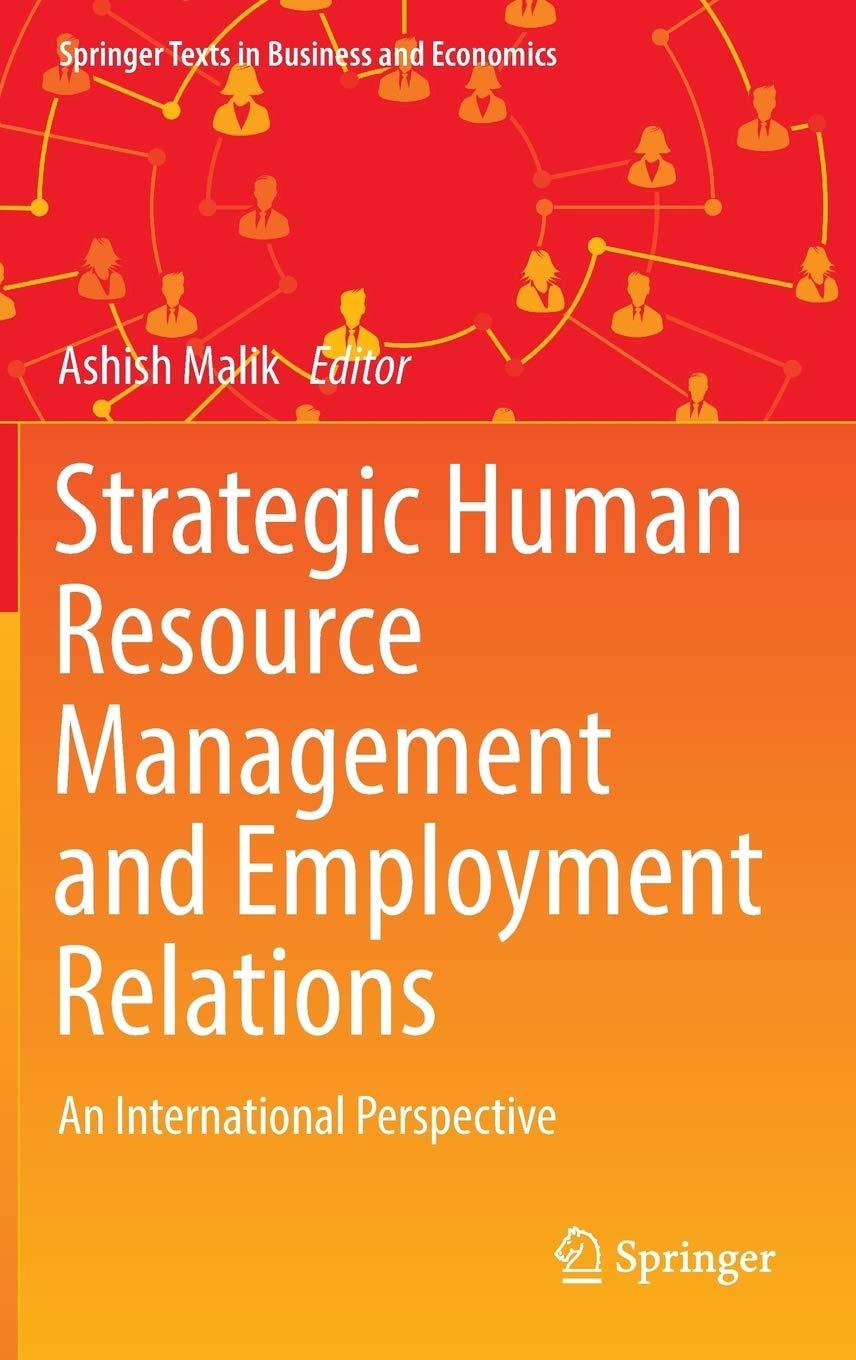Global work-life initiatives present unique challenges for HR departments in multinational enterprises (MNEs) because of the complexity
Question:
Global work-life initiatives present unique challenges for HR departments in multinational enterprises (MNEs) because of the complexity of implementing policies that require sensitivity to local issues such as cultural traditions and legislation (e.g., Bardoel and De Cieri 2007; Scullion et al. 2007; Sumelius et al. 2008). However, discussion specific to work-life management in a global context is limited (e.g., Allen et al. 2010; Lewis et al. 2007). Amid unprecedented levels of global mergers, acquisitions and international growth, the challenge for HR professionals working in multinational enterprises is to define a global work/life strategy that establishes shared guidelines while allowing for local differences. Although there are a number of common issues faced by working women and men and their families, a global work-life strategy needs to reflect a course of action that is appropriate to the local environment. According to Spinks (2003) an effective family friendly strategy requires managers to be cognizant of a number of local factors that influence employees’ work and personal lives. These factors include the culture and tradition, the role of key stake-holders, public policies, community resources and infrastructure, and workplace practices and demo-graphics (Bardoel and De Cieri 2007).
Work-life management practices refer to those practices in organizations introduced to facilitate the integration of employees’ work and non-work demands (McCarthy et al. 2010). Work-life policies include flexible working conditions, leave options (e.g. parental, adult care, bereavement etc.), and child and dependant care (e.g. childcare centers, afterschool care support etc.) (Smeaton et al. 2014).
Various studies have also linked work-life practices to improved employee commitment (Muse et al. 2008; Richman et al. 2008), employee performance and organizational citizenship behavior (Lambert 2000; Muse et al. 2008), enhanced recruitment efforts (Christensen and Schneider 2010) better employee health and well-being (Grzywacz et al. 2008) and, increased job satisfaction (Grandey et al.
2007; Muse et al. 2008).
Managers at headquarters might further either not rotate LGBT employees through operations where they would not be welcome, or at least inform them ahead of time of the local context. The third, spatial separation, involves strategically applying different policies to different locations depending upon context and institutions or, relatedly, separating local from corporate policies. In this case, corporate LGBT policy could either be written to include exceptions for local conditions, or policy development and metrics to measure success could be pushed down to the regional or local level; in the latter case, corporate policy might include support for LGBT employees as an objective, with methods for doing so determined at the local level, pressing regional managers to use their contextual and institutional knowledge to move forward where and in ways such that the benefits outweigh the costs. The fourth, temporal separation, involves taking time into account. For example, LGBT policies might be trialed in nations that are relatively less discriminatory, such as the U.S., with evaluation and further policy development prior to global implementation........
Case Study Questions
Following the above case study and relying on the key resource stated below, your task is to:
1. Analyse three generic sources of tensions are identified in the management of global work-life issues.
2. Evaluate various resolutions that could apply to MNEs in relation LGBT employees.
3. Decide which strategy do you think would be most effective in the case study MNE?
4. Comment should this MNE have a global LGBT policy? Why/ why not?
Step by Step Answer:

Strategic Human Resource Management And Employment Relations An International Perspective
ISBN: 9789811303982
1st Edition
Authors: A. Malik





